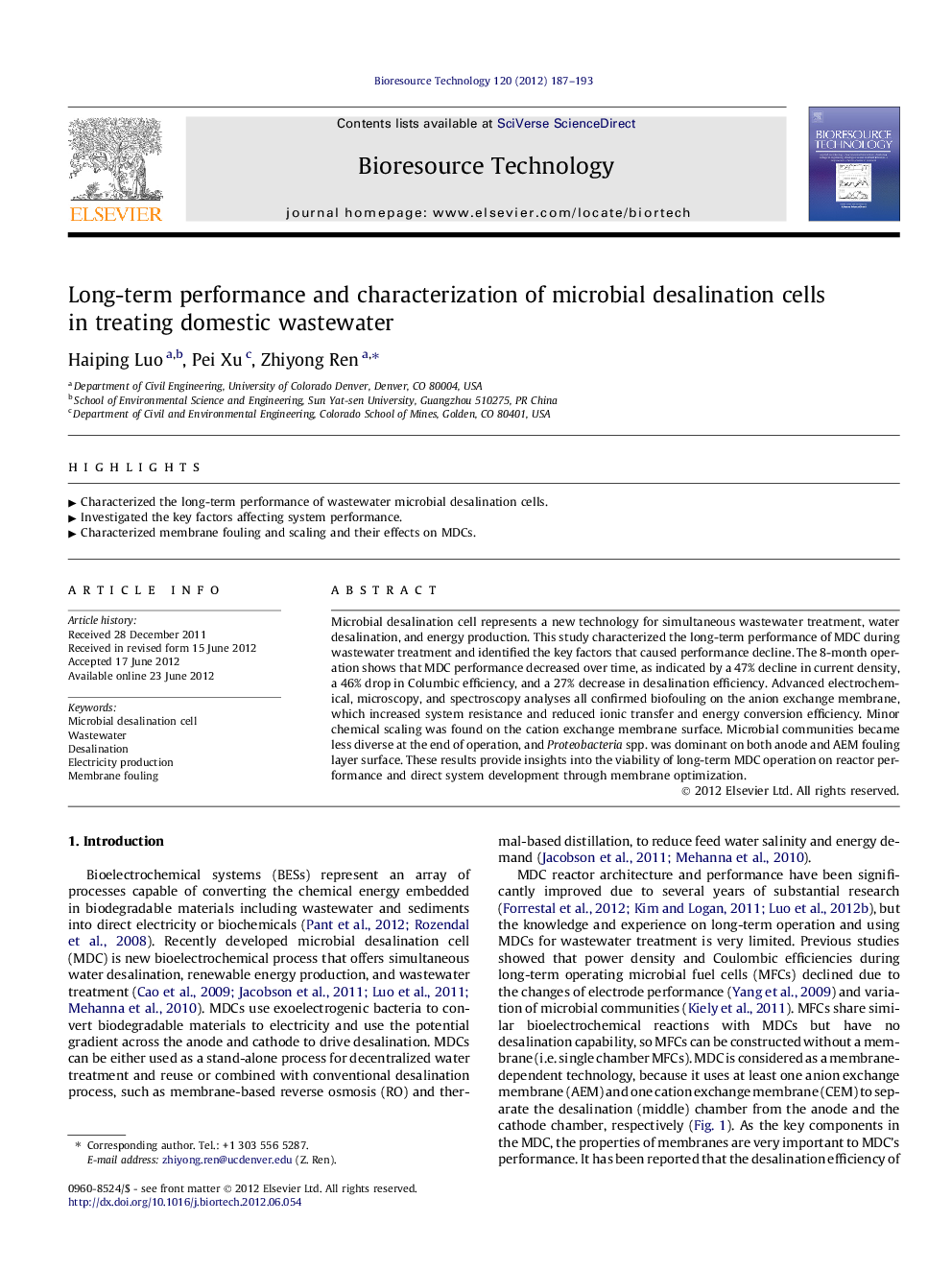| Article ID | Journal | Published Year | Pages | File Type |
|---|---|---|---|---|
| 681373 | Bioresource Technology | 2012 | 7 Pages |
Microbial desalination cell represents a new technology for simultaneous wastewater treatment, water desalination, and energy production. This study characterized the long-term performance of MDC during wastewater treatment and identified the key factors that caused performance decline. The 8-month operation shows that MDC performance decreased over time, as indicated by a 47% decline in current density, a 46% drop in Columbic efficiency, and a 27% decrease in desalination efficiency. Advanced electrochemical, microscopy, and spectroscopy analyses all confirmed biofouling on the anion exchange membrane, which increased system resistance and reduced ionic transfer and energy conversion efficiency. Minor chemical scaling was found on the cation exchange membrane surface. Microbial communities became less diverse at the end of operation, and Proteobacteria spp. was dominant on both anode and AEM fouling layer surface. These results provide insights into the viability of long-term MDC operation on reactor performance and direct system development through membrane optimization.
► Characterized the long-term performance of wastewater microbial desalination cells. ► Investigated the key factors affecting system performance. ► Characterized membrane fouling and scaling and their effects on MDCs.
